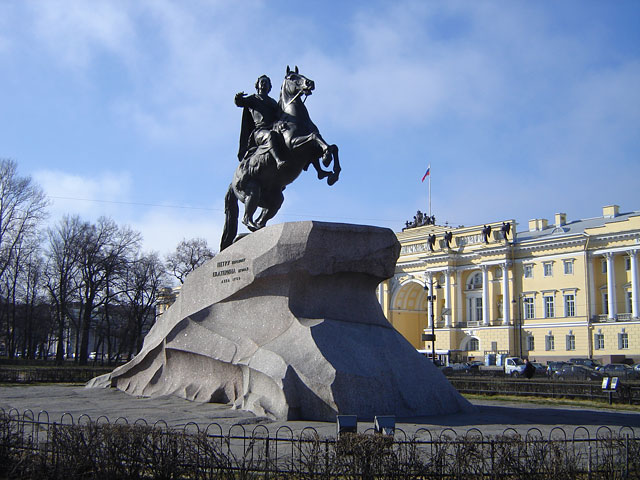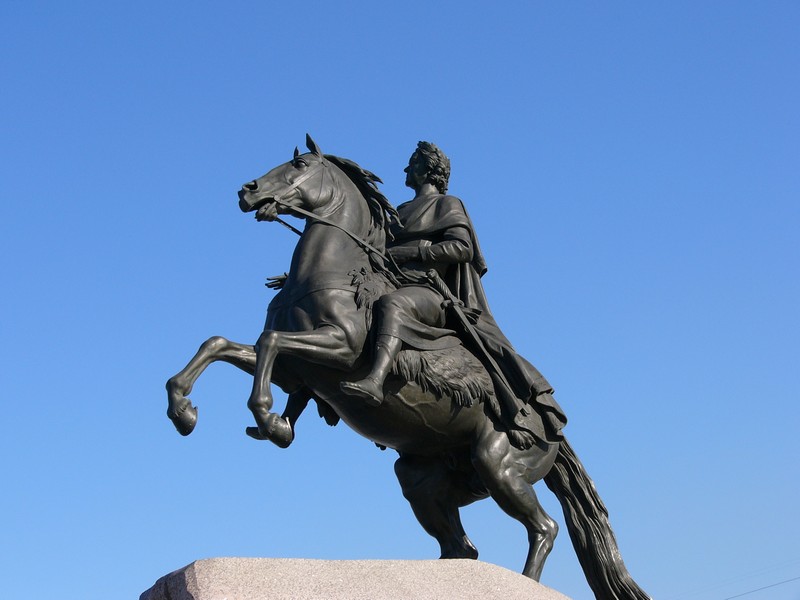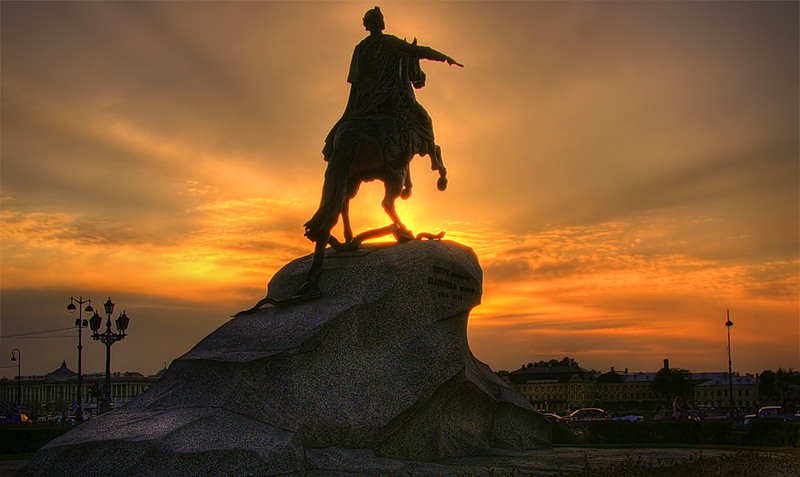|
A symbol of indomitable will and
ruthless vision, the famous statue of Peter the Great known as the Bronze
Horseman was commissioned by Catherine the Great to glorify the “enlightened absolutism”,
designed by a French sculptor Etienne Falconet in 1782. The monument depicts
Peter the Great riding the horse. The laurel wreath on the head of the Emperor
is the symbol of his glory. The hand of Peter the Greats points to the Neva River,
the Academy of Sciences and the Peter and Paul
Fortress, which symbolizes the main goals of Peter's ruling: enlightenment, trading
and military power. The pedestal for the monument is a solid piece of rock
shaped as a wave, as it was Peter the Great who gained the access to the sea
for Russia.
The appropriate granite boulder was founded in 1768 on the shore of the Gulf of Finland, in the vicinity of the Lakhta village.
It weighted 1,600 tons and was called the Thunder-stone.
According to a 19th century legend,
enemy forces will never take St.
Petersburg while the "Bronze Horseman"
stands in the middle of the city. During the Second World War the statue was
not taken down, but was protected with sand bags and a wooden shelter. In that
way, the monument survived the 900-day Siege of Leningrad virtually untouched. The
statue is now one of the symbols of Saint Petersburg,
in much the same way that the Statue of Liberty is a symbol of New York City.
|





